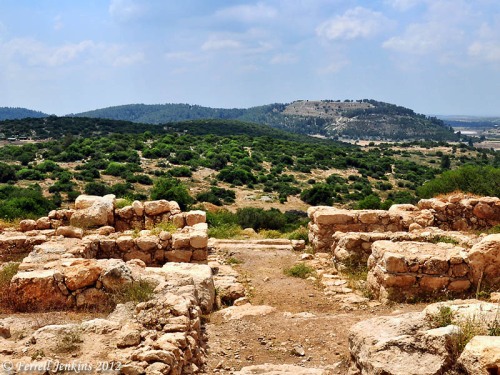'via Blog this'
Preliminary report on Khirbet Qeiyafa for 2010-2011
A preliminary report for the 2010-2011 archaeological seasons has been published by the Israel Antiquities Authority in Hadashot Arkheologiyot: Excavations and Surveys in Israel. The report is written by Yossi Garfinkel, Sa‘ar Ganor and Michael Hasel.
My photo shows the Iron Age, four-chamber, gate with a view toward Tel Azekah.
The full report with 11 photographs (or plans) is available here. The report concludes,
The excavations at Khirbat Qeiyafa clearly reveal an urban society that existed in Judah already in the late eleventh century BCE. It can no longer be argued that the Kingdom of Judah developed only in the late eighth century BCE or at some other later date.
The current issue of Biblical Archaeology Review (May/June 2012) carries two article relating to the Qeiyafa ostracon. One is by Christopher A. Rollston who asks the question, “What’s the Oldest Hebrew Inscripton?” He responds that each of four inscriptions he considers (Qeiyafa, Gezer calendar, Tel Zayit, and Izbet Shartah) predate Old Hebrew.
The other article is by Gerard Leval. In “Ancient Inscription Refers to Birth of Israelite Monarchy” he summaries the French-language article by “Emile Puech, the senior epigrapher of the prestigious École Biblique et Archaéologique Française in Jerusalem.” Puech draws the following conclusion:
Moreover, the inscription seems to memorialize (or, in Puech’s words, is “a witness to”18) the transition not from one king to another (from Saul to David), but rather from the period of the judges to the monarchy—thus from Samuel and his sons to Saul.19If Puech is correct, the Qeiyafa Ostracon is the only archaeological artifact referring to Israel’s first king. And it is the earliest non-Biblical confirmation of the establishment of the Israelite monarchy.
Leval’s article is available online at BAR here.
This information is sure to create a lot of discussion.


No comments:
Post a Comment